CPD Live is less than a week away! Have you registered?

May 27th, 2020
There’s just under a week to go until the industry’s easiest way to earn CPD points is back! Join us June 2nd and 3rd for two full days of dynamic panel discussions from a range of architecture and designs leading brands. Join sessions that catch your eye or attend them all and earn a whopping 10 formal CPD points as part of the AIA’s refuel program. You’ll hear from and interact with panels comprised of industry experts, covering a range of topics including drainage, lighting, timber specification, corrosion and architectural design.
The best part about CPD Live is that it’s 100% free and 100% digital, meaning you’ll be able to tune in from wherever you have an internet connection.
So what are you waiting for? Register today!

Today, more than ever, it is paramount that we use water wisely. This session will explore how technology and specification can increase water efficiency, identifying products that meet the WELL Building Standard, are fit for purpose and are aesthetically pleasing.
Presented by John Hoogendoorn (Phoenix Tapware), Ljiljana Gazevic (SJB Interiors), Ben Robertson (Tecture).
At the end of this presentation you should be able to –
(Design: Conceptual Design 3.1, 3.4. Design: Schematic Design 4.2, 4.4, 4.7. Documentation: Documentation 6.5)
–

The rise of e-commerce and the associated increase in parcel deliveries has had unintended environmental consequences. This session looks at the solutions to this, balancing the benefits of e-commerce while minimising congestion and foot traffic.
Presented by Lauren Melton (Groundfloor), Dale O’Brien (Gray Puksand), Liam Timms (International Towers Sydney).
At the end of this presentation you should be able to –
(Design: Project Briefing 1.2. Design: Pre Design 2.6. Design: Conceptual Design 3.3. Design: Schematic Design 4.2, 4.5. Documentation: Detailed Design 5.2)
–

While lighting is a fundamental part of every project, it is of particular importance in urban design. In public spaces, darkness can directly affect the safety and wellbeing of citizens and their ability to interact with the cities they live in. This session explores where and what to install on a site, new research that may inform design decisions, and the regulations that guide us.
Presented by Tom Curtis (Light Project), Rebecca Cadorin (ARUP).
At the end of this presentation you should be able to –
(Design: Project Briefing 1.2. Design: Pre Design 2.4. Design: Conceptual Design 3.1, 3.3, 3.4. Documentation: Detailed Design 5.1)
–

As our climate changes, we look to source and use materials that embody a more conscious and sustainable future. As a renewable source, timber tops the list. However, what makes timber special? How is it best used? What timber is best for which application? The variety of timber is manifold and this session’s expert knowledge will inform and educate.
Presented by Brent Calow (Havwoods), Peta Heffernan (Liminal Studio), Rebecca Yeo (Billard Leece Partnership).
At the end of this presentation you should be able to –
(Design: Conceptual Design 3.1, 3.2, 3.4. Design: Schematic Design 4.1, 4.6. Documentation: Detailed Design 5.1, 5.5)
–

Despite regulatory change aimed at clarifying the issue of fire safety, there is still a widespread lack of understanding based on comparing ‘generic’ product types regardless of brand. This session will look at what constitutes compliant aluminium cladding products, how they satisfy the fire safety requirements and how they compare to each other.
Presented by Ben Wallis (Bluechip).
At the end of this presentation you should be able to –
(Design: Project Briefing 1.4. Design: Conceptual Design 3.4, 3.7. Design: Schematic Design 4.6, 4.7. Documentation: Detailed Design 5.3, 5.5. Documentation: Documentation 6.5)

Whenever the functional requirements of windows are discussed, energy efficiency is invariably raised as windows play an integral role in heat transfer. This session looks beyond glazing to explore additional window components that affect sustainability and specification.
Presented by Ross Baynham (Alspec), Samantha Anderson (Inhabit), Vince Wardill (Technoform).
At the end of this presentation you should be able to –
(Design: Project Briefing 1.2. Design: Pre Design 2.6. Design: Conceptual Design 3.3, 3.4, 3.7. Design: Schematic Design 4.2, 4.7)
–

The civil construction sector has something of a blind spot when it comes to corrosion, despite it being a real and present issue. What then is the most effective approach to corrosion management? What processes should be undertaken to minimise the threat of corrosion and what can alleviate the problem once it occurs?
Presented by Justin Rigby (Remedy Asset Protection), John Barker (HBT Insurance Brokers Pty Ltd), Troy Walters (TWC Group Pty Ltd).
At the end of this presentation you should be able to –
(Design: Project Briefing 1.4. Design: Pre Design 2.1. Design: Conceptual Design 3.3, 3.4, 3.7. Design: Schematic Design 4.4, 4.6. Documentation: Detailed Design 5.3, 5.5. Documentation: Documentation 6.2)
–

As technology, process, materials and codes change, product design needs to adapt to this new reality and architects must rely on the ability of the artisan or manufacturer to translate their bespoke ideas into a reality. In this session, we will explore how design works with process to achieve optimum outcomes for both single residences and large commercial budlings.
Presented by Tim Phillips (TILT), Anita Panov (panovscott), James Perry (fjmt), Luigi Rosselli (Luigi Rosselli Architects).
At the end of this presentation you should be able to –
(Design: Project Briefing 1.2, 1.3. Design: Pre Design 2.1, 2.3. Design: Conceptual Design 3.3, 3.4. Design: Schematic Design 4.1, 4.3, 4.4. Documentation: Detailed Design 5.1)
–

Window coverings play a crucial role in ensuring that commercial buildings are sustainable. The most recent update to NCC 2019 reflects this fact. This session will explore NCC 2019 Section J and will provide an understanding of window covering options and how to evaluate them for design, functionality and energy efficiency.
Presented by Alison Peach (Verosol), Dr. Roberto Minunno (Curtin University), Sarah Tyson (Hassell).
At the end of this presentation you should be able to –
(Design: Project Briefing 1.2, 1.4. Design: Pre Design 2.3. Design: Conceptual Design 3.3, 3.4. Design: Schematic Design 4.7)
–

Wise water management is integral in ensuring a successful built outcome for any project. But what is required when addressing water management and drainage? This session will address this core question and will also examine which products to use, what meets code, how drainage impacts design aesthetics and how to utilise correct systems for a more sustainable future.
Presented by James Huggett (Everhard Industries), Kevin Smerdon (Everhard Industries), Marnie Morieson (Kennedy Nolan).
At the end of this presentation you should be able to –
(Design: Pre Design 2.1. Design: Conceptual Design 3.1, 3.2. Design: Schematic Design 4.1, 4.4, 4.6. Documentation: Detailed Design 5.5. Documentation: Documentation 6.5)
INDESIGN is on instagram
Follow @indesignlive
A searchable and comprehensive guide for specifying leading products and their suppliers
Keep up to date with the latest and greatest from our industry BFF's!
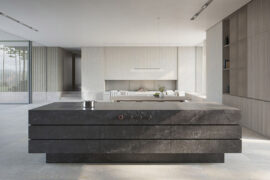
For those who appreciate form as much as function, Gaggenau’s latest induction innovation delivers sculpted precision and effortless flexibility, disappearing seamlessly into the surface when not in use.
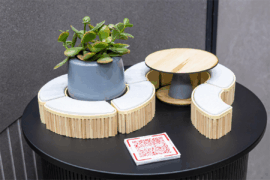
From the spark of an idea on the page to the launch of new pieces in a showroom is a journey every aspiring industrial and furnishing designer imagines making.
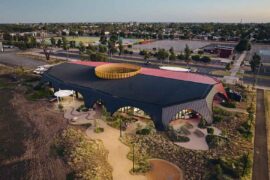
At the Munarra Centre for Regional Excellence on Yorta Yorta Country in Victoria, ARM Architecture and Milliken use PrintWorks™ technology to translate First Nations narratives into a layered, community-led floorscape.

Rising above the new Sydney Metro Gadigal Station on Pitt Street, Investa’s Parkline Place is redefining the office property aesthetic.
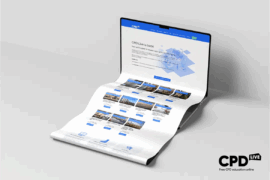
The final day of CPD Live’s 2025 season delivers three must-attend sessions exploring circular design for furniture and fitouts, and the science behind safe, high-quality drinking water. Starting from 9 AM AEDT, 16th October – it’s your last opportunity this year to join our Live CPD sessions and finish 2025 inspired.

CPD Live’s final live-presented season for 2025 continues with a powerful Day 2 lineup, delving into façade weatherproofing, apartment design trends, smart bathrooms, and digital compliance. Starting from 9 AM AEDT, these free CPD-accredited sessions will help you finish the year with fresh insight and full compliance confidence.
The internet never sleeps! Here's the stuff you might have missed
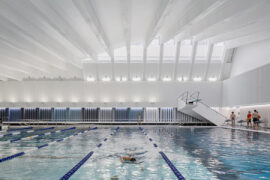
Hiwa, the University of Auckland’s six-storey recreation centre by Warren and Mahoney with MJMA Toronto and Haumi, has taken out Sport Architecture at the 2025 World Architecture Festival. A vertical village for wellbeing and connection, the project continues its run of global accolades as a new benchmark for campus life and student experience.
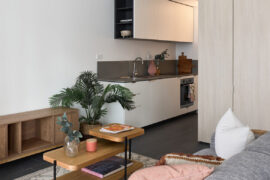
Boronia Apartments in Waterloo, designed by TURNER for City West Housing, delivers 74 affordable rental homes that combine sustainable design with long-term community-focused living.